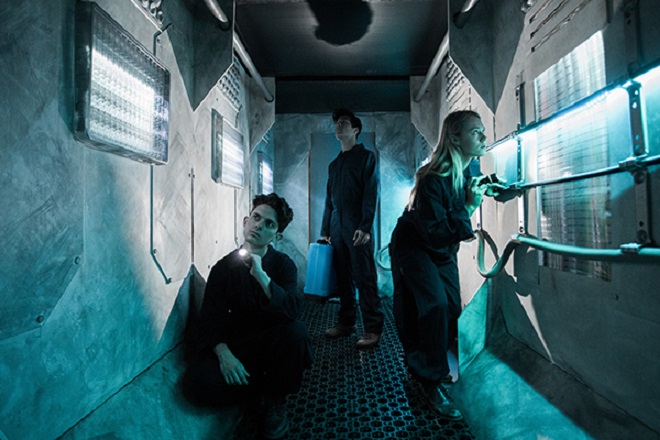Enabling a group of individuals to work as an effective team is one of the cornerstones of good business practice. There are a number of ways in which employers can encourage and facilitate team building, but one of the most effective and inclusive ways is to book the group into an escape room. Let’s look at five reasons to choose this form of team building activity rather than other ways, such as outward-bound courses or in-house group exercises and role play.
Identifying team roles
Winning teams are made up of individuals who carry out a number of roles and these roles can be identified by the preferred behaviour shown by team members. Some are creative types who like to solve problems, others like to take a step back and evaluate the situation taking into account all the possible options. Those who are good at delegating will demonstrate a coordinator role and there is the cooperative member who listens and is a complete team worker.
Allowing people to carry out a fun activity, with the end result of solving the mysteries and then getting out of the escape room, is not as intimidating as being set a work-related task. People perform much better they are more relaxed, and it helps the management team identify potential team leaders and preferred team roles all in the course of one session. In more traditional methods of team building, this may take several sessions, which is time consuming, as well as not cost effective when compared to going to an escape room.
Bonding over common goals
In an escape room exercise, it is the individuals involved that set out a common goal, which is to solve the clues and get out of the room as soon as possible. Giving ownership of common goals is not always possible in a work-based scenario in a way that involves everyone. Within the escape room, there is no getting away from the task at hand, and so players have to determine what the aim is and work together to ensure they maximise each other’s skills and knowledge to benefit the whole team.
For managers, it also helps identify team members who do struggle with common goals because they have a fixed mind set. They find problem solving difficult and this can have an impact back in the workplace. Within a very short space of time, their difficulties will be clearly highlighted and then leaders can put in place a plan to deal with them appropriately.
Inclusivity
In some team building activities, which involve outdoor challenges, there will be members of the team who physically may not be able to join in or feel threatened by the idea of bonding activities such as abseiling challenges. If the team building involves sports or other physical activity, again this can leave some people who do not feel comfortable at taking part.
One of the main advantages of taking part in an exercise within an escape room is that everyone can play an equal part. Even if they have a physical disability or impairment, escape rooms are accessible spaces so that everyone can demonstrate their own strengths in terms of the roles within a team. Combined with the fun element and this has to be one of the best methods of team building that is truly inclusive.
Development of communication and problem-solving skills
In an escape room scenario, there are no emails pinging into the in box, no mobile phones clamped to the ear and no computer screen taking up all the attention. In order to get out of the situation, team players have to verbally communicate with each other. This can come as something of a shock to the millennials as they may have to be surgically removed from their smartphones, but they will develop not just verbal skills but active listening skills if they want to get out of room in the optimum time.
Instead of hitting the search engines to come up with the answer, the team will also get the opportunity to practice their problem-solving skills in a very creative environment. The puzzles that are provided can have a number of solutions but only one of them is going to be the right one to move them on to the next clue. Having to reassess their strategy and thinking and become adaptive, is going to be a life skill that is indispensable in the workplace.
Conflict management in a safe space
As the team members work through a series of puzzles and clues, there is always a period of “storming” before the team settles into the “norming”, “conforming” and then “performing” stage. As individual members try to take the lead, others may listen or confront and challenge or put another viewpoint forward, so it gives the opportunity for people to get to know their team member. It also shows how the team works out its problems and overcomes hurdles and difficulties, which is difficult to see when back at the office or work venue.
Being in the escape room, the team members all come together face to face and they can see how each other reacts under pressure and under what is a short time of “conflict” in a safe environment. It is a real opportunity to grow and showcase someone’s skills in a way that may not be picked up in the workplace. This is of benefit to managers and leaders because it allows them to also note who may need additional support in this area and see those individuals who have strengths in handling difficult situations. This can help in setting out further guidance and advice when it comes to appraisals and one to ones, so contributes to setting performance objectives as well.
If as a company, you are looking to grow and develop the team of people who work for you, in a unique and challenging way whilst having a fun day outside of the office, then these are just five reasons to choose an escape room activity.




